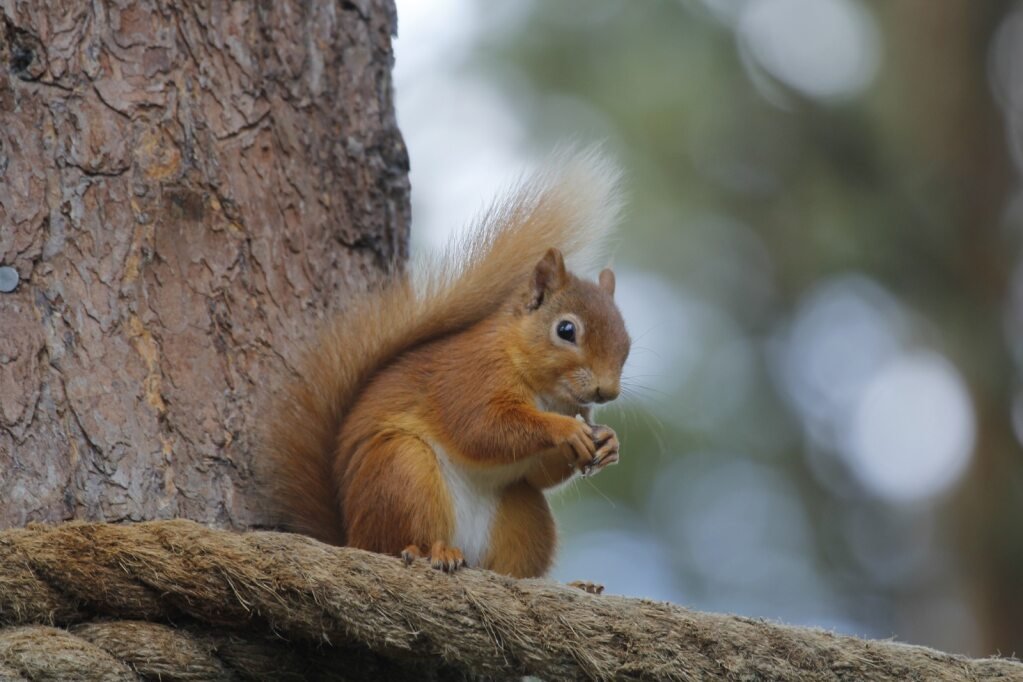Red Squirrel Recovery
Red squirrels are a beloved and iconic native species – but their numbers have undergone sharp declines in Great Britain over the past 60 years, and they have disappeared from 60% of their range in the last 13 years. They are endangered in England and Wales and near threatened in Scotland. According to our Red List, there may be fewer than 30,000 red squirrels left in Great Britain.
The major factors behind their decline are competition and disease from the invasive grey squirrel. Therefore, the only certain way to sustain a population of red squirrels is through the exclusion of grey squirrels.
This can be done by creating habitats favourable only for red squirrels, and through careful conservation and reintroduction efforts – but in order to do this successfully, a greater understanding of red and grey squirrels is needed.
Read about red squirrels here
The Mammal Society is proud to be an active member of the UK Squirrel Accord (UKSA), a partnership of 45 leading conservation and forestry organisations, Government agencies and companies across the UK, with links to red squirrel community groups. The UKSA partners work together to lead and support research and action into red squirrel conservation, and to protect red squirrels and broadleaf trees from the negative impacts of grey squirrels.
The Mammal Society, with other partners from UKSA, is actively inputting to research funded by Natural England to take a structured decision-making (SDM) approach to help develop a national recovery strategy for red squirrels in England. This research is being led by Dr Beth Smith, a Postdoctoral Research Assistant based at the Institute of Zoology, ZSL. The SDM approach being applied to this situation is used to methodically think through difficult decisions and allows for decisions to be informed by scientific evidence alongside the values and risk attitudes of the people involved. A report will be published in 2025.
In 2024 the Mammal Society led on the analysis of squirrel survey data to produce updated maps of the range of red and grey squirrels across the UK, and where these overlap. With the situation changing so rapidly as a result of red squirrel conservation and translocation projects, grey squirrel control efforts and the impact of squirrel pox on vulnerable red squirrel populations, the Mammal Society warmly encourages local groups and surveyors to record and submit all red and grey squirrel sightings via Mammal Mapper to help inform conservation decision-making with the most up-to-date data possible.
Red Squirrel Acoustic Monitoring Project
Partnering with the University of Bristol, non-profit tech start-up Rainforest Connection, and Huawei Technologies for a ground-breaking project aiming to protect red squirrels through collecting bio-acoustic data.
Custom-built Guardian and AudioMoth devices, powered by Huawei’s world-leading AI technologies, are used to collect acoustic data from the environment in forests inhabited by only red squirrels, by only grey squirrels, and by both species. The data is transferred to researchers at the University of Bristol, who are using it to build up a picture of the ecosystem to help learn about the behaviours of squirrels.
Why is this project important?
This project trials a new way of remotely monitoring areas of squirrel habitat, allowing real-time information of squirrel activity and especially grey squirrel incursion into red squirrel habitat with minimal surveyor effort.
The project gives us a new insight into squirrel activity, not be possible without using this technology.
The results of this project will help us identify where conservation effort will be most effective and make the biggest difference to red squirrel populations.
Have a question? Send us an email




